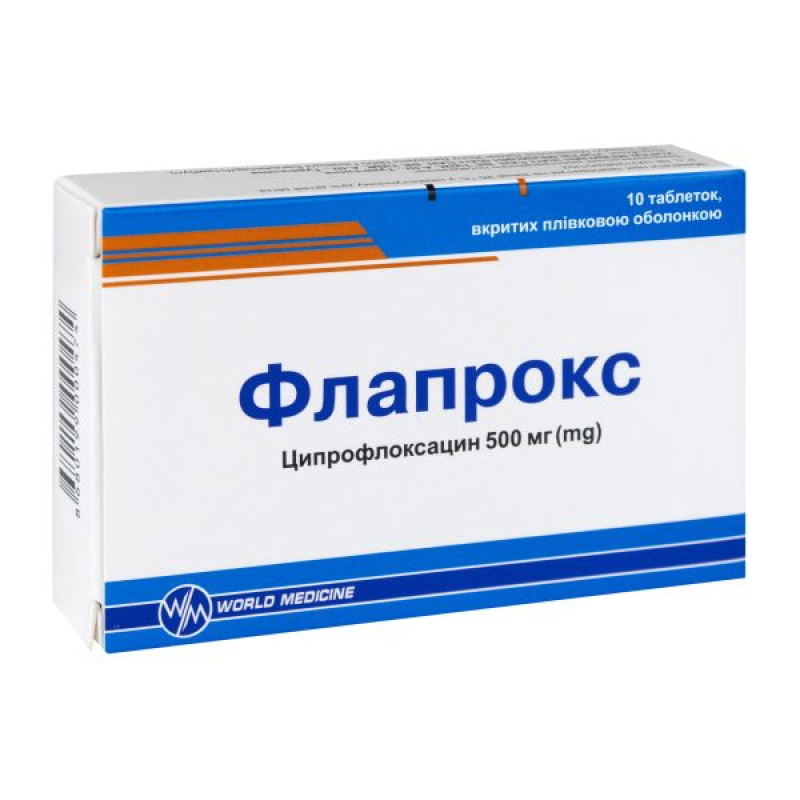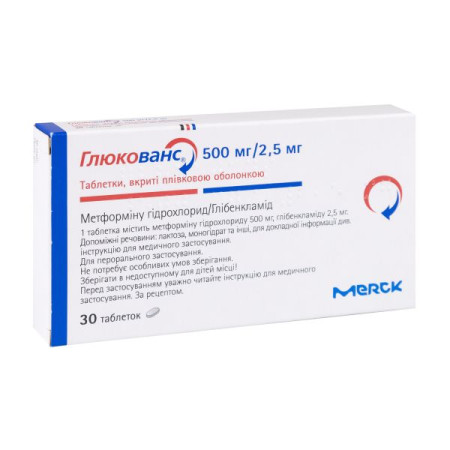Flaprox film-coated tablets 500 mg blister No. 10

Pharmacological properties
Pharmacodynamics. Mechanism of action. The bactericidal effect of ciprofloxacin as a fluoroquinolone antibacterial agent is due to its ability to inhibit type II topoisomerase (DNA gyrase and topoisomerase IV), which are required in many processes of the DNA life cycle, such as replication, transcription, repair, and recombination.
Pharmacokinetic/pharmacodynamic relationships. Efficacy mainly depends on the relationship between C max in blood plasma and the MIC of ciprofloxacin for the bacterial pathogen and on the value of AUC and MIC.
Mechanism of resistance. Resistance to ciprofloxacin in vitro is usually associated with target site mutations, which usually arise in topoisomerase IV and DNA gyrase by multistep mutations. Single mutations usually do not result in clinical resistance, but multiple mutations usually cause clinical resistance to several or all members of the fluoroquinolone class.
Resistance mechanisms such as impermeability and/or efflux pumps may have a different impact on susceptibility to fluoroquinolones, depending on the physicochemical properties of the different members of the class and the affinity of the transport systems for each active substance. All in vitro resistance mechanisms are generally observed in clinical isolates. Resistance mechanisms that inactivate other antibacterial agents, such as the permeability barrier (characteristic of Pseudomonas aeruginosa) and efflux mechanisms, may affect susceptibility to ciprofloxacin.
The development of resistance mediated by plasmids encoded by the QNR gene has been reported.
Spectrum of antibacterial activity. Breakpoints separate susceptible strains from strains with intermediate susceptibility, and the latter from resistant strains.
EUCAST recommendations
| Enterobacteriaceae | ≤0.5 | 1 |
| Pseudomonas spp. | ≤0.5 | 1 |
| Acinetobacter spp. | ≤1 | 1 |
| Staphylococcus spp. 1 | ≤1 | 1 |
| Haemophilus influenzae and Moraxella catarrhalis | ≤0.5 | 0.5 |
| Neisseria gonorrhoeae | ≤0.3 | 0.06 |
| Neisseria meningitidis | ≤0.3 | 0.06 |
| Non-species related checkpoints * | ≤0.5 | 1 |
1 Staphylococcus spp. - ciprofloxacin breakpoints are relevant to high-dose therapy.
* Non-species breakpoints were determined primarily based on pharmacokinetic and pharmacodynamic relationship data and are independent of species-specific MICs. They are only used for species that do not have their own breakpoints and not for those in which susceptibility testing is not recommended.
The prevalence of acquired resistance of selected species may vary depending on location and time, therefore local information on resistance is important, especially in the treatment of severe infections. As necessary, specialist advice should be sought if the local prevalence of resistance is such that the benefit of the agent, at least for some types of infections, is questionable.
The following genera and species of bacteria are generally sensitive to ciprofloxacin:
| Sensitive (usually) types of microorganisms | |||
| gram-positive aerobic microorganisms: Bacillus anthracis 1 | Gram aerobic microorganisms: Aeromonas spp. Brucella spp. Citrobacter koseri Francisella tularensis Haemophilus ducreyi Haemophilus influenzae * Legionella spp. Moraxella catarrhalis * Neisseria meningitidis Pasteurella spp. Salmonella spp. * Shigella spp. * Vibrio spp. Yersinia pestis | Anaerobic microorganisms: Mobiluncus | Other microorganisms: Chlamydia trachomatis $ Chlamydia pneumoniae $ Mycoplasma hominis $ Mycoplasma pneumoniae $ |
| Species for which acquired resistance may develop | |||
| Aerobic gram-positive microorganisms: Enterococcus faecalis $ Staphylococcus spp. *, 2 | Aerobic Gram-negative microorganisms: Acinetobacter baumannii + Burkholderia cepacia *, + Campylobacter spp. *, + Citrobacter freundii * Enterobacter aerogenes Enterobacter cloacae * Escherichia coli * Klebsiella oxytoca Klebsiella pneumoniae * Morganella morganii * Neisseria gonorrhoeae * Proteus mirabilis * Proteus vulgaris * Providencia spp. Pseudomonas aeruginosa * Pseudomonas fluorescens Serratia marcescens * | Anaerobic microorganisms: Peptostreptococcus spp. Propionibacterium acnes | |
| Microorganisms initially resistant to ciprofloxacin | |||
| Aerobic gram-positive microorganisms: Actinomyces Enterococcus faecium Listeria monocytogenes | Aerobic Gram-negative microorganisms: Stenotrophomonas maltophilia | Anaerobic microorganisms. Except for the above | Other microorganisms: Mycoplasma genitalium Ureaplasma urealyticum |
1 Clinical efficacy has been demonstrated for susceptible isolates in accordance with approved clinical indications.
+ Resistance rate ≥50% in one or more sites
There are no reviews for this product.
There are no reviews for this product, be the first to leave your review.
No questions about this product, be the first and ask your question.










